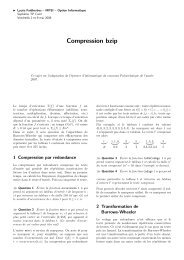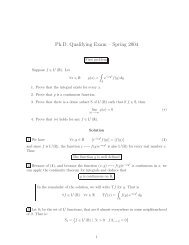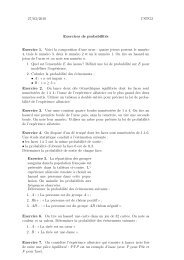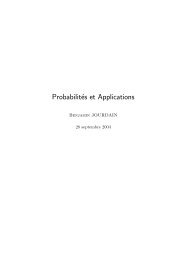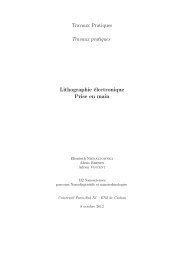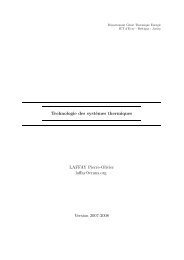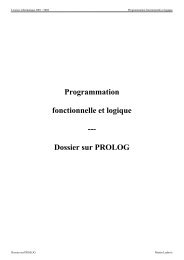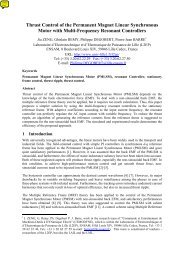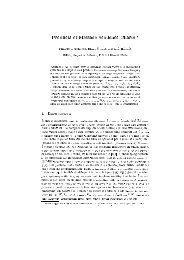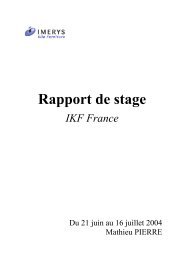A Hybrid Factored Frontier Algorithm for Dynamic Bayesian Networks
A Hybrid Factored Frontier Algorithm for Dynamic Bayesian Networks
A Hybrid Factored Frontier Algorithm for Dynamic Bayesian Networks
Create successful ePaper yourself
Turn your PDF publications into a flip-book with our unique Google optimized e-Paper software.
Fig. 4. EGF-NGF pathwayWe next considered the EGF-NGF pathway in PC12 cells. This cell line is a valuable model systemin neuroscience. Specifically, PC12 cells proliferate in response to EGF stimulation but differentiate intosympathetic neurons in response to NGF. This phenomenon has been intensively studied [9] with a transientactivation of Erk1/2 associated with cell proliferation, while a sustained activity has been linked todifferentiation. The network structure of this pathway shown in figure 4. The ODE model of this pathwayis available in the BioModels database [17]. It consists of 32 differential equations (one <strong>for</strong> each molecularspecies) and 48 associated rate parameters (estimated from multiple sets of experimental data). Its DBNapproximation was adapted from the one constructed in [15] and details can be found in [14]. We computedthe HFF profiles <strong>for</strong> various sizes of spikes set. Next we ran FF and compared its profiles with those of HFF.For many of the species FF did quite well. However, 6 species out of 32 exhibited a significant difference,among which were important proteins such as Activated Sos and Activated Erk.Since the DBN consisted of 3200 nodes (32 nodes per time slice; 100 time slices), with each node’svariable assuming 5 possible values, it was not possible to compute the exact probability distributions over5 32 states at each time point. However, to compare the accuracy of FF and HFF (with σ = n 3 = 32768<strong>for</strong> this DBN), one does not necessarily need the exact distribution. Denoting Mσ t (respectively, MF t F ) themarginal at time t computed by HFF with σ spikes (respectively, FF), the quantity |M t (i, v) − P (Xi t =v)| − |MF t F (i, v) − P (Xt i = v)| does not depend on the exact marginal P (Xt i = v). Rather, it depends onthe marginals (Mσ(i, t v), MF t F(i, v)) and their relative position with respect to the exact marginal.Now, as σ approaches K n (where K = |V |), α approaches 1 and thus the belief states computed by HFFapproach the exact distributions. Hence, we ran HFF with different values of σ -denoted HFF(σ)- rangingfrom HFF(3072) upto HFF(100000) and looked <strong>for</strong> a pattern. From the relative positions of the curves, andthe high value of α (always bigger than 0.6) <strong>for</strong> HFF(100000), we infer that the curve <strong>for</strong> HFF(100000) is onthe same side of FF and HFF(32768) as the exact marginal. Hence, the quantity |M t 32768 (i, v) − M t 100000 | −|M t F F (i, v)−M t 100000 | is a good approximation <strong>for</strong> |M t 32768 (i, v)−P (Xt i = v)|−|M t F F (i, v)−P (Xt i = v)|.In figure 5 we show <strong>for</strong> Activated Erk, the computed marginals of the concentration of this protein falling inthe interval [2, 3) <strong>for</strong> FF as well as HFF(3072), HFF(32768) and HFF(100000).8



